СУКЦЕССИИ РАСТИТЕЛЬНОСТИ В ПАСТБИЩНЫХ ЭКОСИСТЕМАХ СУХО-СТЕПНОЙ ЗОНЫ СЕВЕРНОГО КАЗАХСТА
СУКЦЕССИИ РАСТИТЕЛЬНОСТИ В ПАСТБИЩНЫХ ЭКОСИСТЕМАХ СУХО-СТЕПНОЙ ЗОНЫ СЕВЕРНОГО КАЗАХСТА
Научная статья
Стыбаев Г.Ж.1, Серекпаев Н.А.2, Муханов Н.К.3, Байтеленова А.А.4
1 ORCID: 0000-0002-6264-4042;
2 ORCID: 0000-0002-0707-3558;
3 ORCID: 0000-0003-0774-4750;
1, 2, 3 Казахский агротехнический университет им. С. Сейфуллина, Астана, Казахстан
* Корреспондирующий автор (baitelenova_alya[at]mail.ru)
Аннотация
За последние 25 лет в растительном покрове сухо-степной зоны Северного Казахстана происходят заметные изменения, связанные с изменением нагрузки и режима выпаса скота на пастбищах, распашкой земель, заброшенностью пашен, и их деградацией. Отличительная черта кормовых угодий – большая доля отводится полыни и незначительное количество разнотравья в травостоях, а также некоторое уменьшение урожайности. Последовательная закономерная смена фитоценоза другим, на определённом участке среды во времени в результате влияния природных факторов или воздействия человека, или - процесс сукцессии, может решить проблему непригодности пастбищ. Нами учитывались изменения растительных сообществ коренного типа вследствие усиленного бессистемного выпаса скота. Всего на территории сухо-степной зоны Северо- Казахстанской области нами изучено 4 модифицированных типа кормовых угодий. В статье приведены результаты проведенного обследования геоботанического состава участков пастбищ. Данные исследования проводятся с целью разработать способы управления сукцессионными процессами фитоценозов на сенокосах и пастбищах и повышения устойчивости их продуктивности в сухостепной зоне Северного Казахстана.
Ключевые слова: пастбища, сукцессионные процессы, фитоценоз, сенокосы, продуктивность, сухо-степная зона.
SUCCESSION OF VEGETATION IN PASTURE ECOSYSTEMS OF THE DRY-STEPPE ZONE OF THE NORTHERN KAZAKHSTAN
Research article
Stybayev G.Zh.1, Serekpayev N.A.2, Muhanov N.K.3, Baitelenova A.A.4
1 ORCID: 0000-0002-6264-4042;
2 ORCID: 0000-0002-0707-3558;
3 ORCID: 0000-0003-0774-4750;
1, 2, 3 S. Seifullin Kazakh Agrotechnical University, Astana, Kazakhstan
* Corresponding author (baitelenova_alya[at]mail.ru)
Abstract
Over the past 25 years, significant changes have occurred in the vegetation cover of the dry-steppe zone of the Northern Kazakhstan due to the changes in the load and mode of grazing in pastures, plowing of lands, abandoned plow and their degradation. A distinctive feature of forage lands is a large amount of wormwood and a small amount of herbage in the grass stands, as well as a slight decrease in yield. A consistent regular change of phytocoenosis to another, at a certain area of the environment in time as a result of the influence of natural factors or human influence, or - the process of succession, can solve the problem of unsuitability of pastures. We took into account the changes in the plant communities of the indigenous type due to the increased unsystematic grazing of cattle. In total, on the territory of the dry-steppe zone of the Northern Kazakhstan, we studied 4 modified types of fodder land. The article presents the results of a survey of the geobotanical composition of pasture plots. The yields of grasses in the surveyed areas, depending on the botanical composition, varied from 1.9 to 5.3 tons/ha. The given researches are conducted with the purpose to develop ways of management of succession processes of phytocenoses on hayfields and pastures and increase of stability of their efficiency in a dry-steppe zone of the Northern Kazakhstan.
Keywords: pasture, succession process, phytocenosis, haymaking, productivity, dry-steppe zone.
Introduction
During the virgin land, the main changes in the vegetation cover were associated with plowing the land, and the disintegration of state agricultural enterprises in the 1990s led to a sharp reduction in the acreage and transfer to the deposits. Due to the fact that in the Republic the main type of agricultural use of the territory is livestock breeding, the change of pastures is gradual, but with no less consequence for steppe nature. At present, the transition of the country from planned management of the national economy to a market economy leads in places to undergrazing of pastures or to overgrazing, which leads to varying degrees of change in the vegetation cover. All these changes in the vegetation cover lead to the disappearance of some species or to a series of restorative succession. Similar changes occur in all countries.
Aim
This article presents the results of scientific research; one of the goals is to survey pastures to monitor natural soils, analyze soil and meteorological conditions, and also to identify the features of secondary successions arising from grazing during the overgrowing of deposits in the grass ecosystems of the Northern Kazakhstan.
Materials and methods
The objects of research are the vegetation of grass ecosystems and the change in its productivity during succession in the dry-steppe zone of the Northern Kazakhstan. Key areas of grass ecosystems of different types of succession are located in Akmola region.
For the survey of pastures, the following farms were identified: the scientific and experimental campus of JSC " S. Seifullin Kazakh Agrotechnical University"; LLP "SC Food" Akkol district of Akmola region; LLP "Agrofirma BaiZher" of Tselinograd district of Akmola region; JSC "Akmola Phoenix" of Tselinograd district of Akmola region. The experimental sites were selected by conducting a detailed analysis of vegetation, species composition, yield of the association, habitat conditions in accordance with the method of the pilot case [1, P. 419], [2, P. 42]. To study, natural or seeded grass stands were taken which were created in different years by sowing grass mixtures with the use of varieties regionalized in the region (Fig. 1, 2).
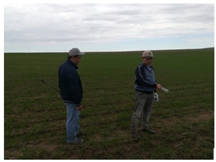
Fig. 1 – Experimental pastures. Survey of pasture
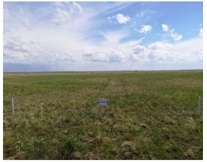
Fig. 2 – Experimental pastures Experimental plots
The results of the studies obtained by Professor Stybaev G.Zh. in 2001-2009 show that the recommended methods for improving the steppe degraded pastures are effective, economically viable and suggest the expediency of phytomeliorative work. Spent amount pays off in 3-5 years, which is cost-effective [3, P.30]. Thus, based on surveys and experimental studies and generalizations for the dry-steppe zone of the Northern Kazakhstan, the following techniques are recommended for improving natural fodder land. For severely damaged and degraded pasture located near villages, it is necessary to make a superficial improvement by sowing perennial grasses, removing from circulation for 2-3 years. In order to improve the water-physical and agrochemical properties of steppe pastures, it is advisable to test strip plowing with a width of 3.5 m in 15 meters. Surface improvement of steppe pastures should be carried out by loosening for 10-12 cm, in the first half of May with the sowing of alfalfa-wheat grass or wheatgrass-bluegrass herbage mixture [4, P. 1-4], [5, P. 1-2], [6, P. 1-3].
However, with the use of certain technologies, it is necessary to monitor pastures which are not fully implemented in farms, and as a consequence, use the wrong selection and sowing of grasses, etc.
Characteristics of study areas
The average daily air temperature in winter months, in comparison with the average long-term mean daily temperatures, was colder in January by 6.4, in February by 0.8 ° C and correspondingly made up 21.4 and 15.5 ° C. In spring months in March and in April, the average daily air temperature was at the level of the average annual data and made up to -8.3 and 4.2 ° C. However, the average daily air temperature in May, in comparison with the average long-term average daily temperatures, was lower by -4.2 ° C and amounted to 8.9 ° C (Table 1).
Table 1 – Average daily air temperature in winter and spring months in comparison with the average long-term values, ºС
| Months | APAT(average perennial amount of temperature) | Agricultural enterprises and organizations | |||
| Campus of KATU | SС «FOOD» | JSC «Akmola Phoenix» | LLP «Agrofirm- BayZher» | ||
| January | -15,0 | -21,4 | -17,6 | -14,8 | -16,9 |
| February | -14,7 | -15,5 | -13,6 | -11,6 | -10,3 |
| March | -8,2 | -8,3 | -9,1 | -7,4 | -7,3 |
| April | 4,3 | 4,2 | 3,0 | 4,8 | 4,9 |
| May | 13,1 | 8,9 | 9,9 | 11,0 | 9,7 |
The precipitation in January was higher than the norm by 3.3 mm, and amounted to 21.6 mm, and in February it was 9.1 mm less than the norm. The precipitation of spring precipitation by months was observed in the following numbers: in March, 37.9 mm, in April - 50.5 mm and in May - 35.8 mm, and, respectively, exceeded the mean annual indicators by 21.0, 30.6 and 2.0 mm (Table 2).
Table 2 – Amount of precipitation in winter and spring months in comparison with the APR, mm
| Months | APR (average perennial rainfall) | Agricultural enterprises | |||
| Campus of KATU | SС «FOOD» | JSC «Akmola Phoenix» | LLP «Agrofirm- BayZher» | ||
| January | 18,3 | 21,6 | 18,0 | 15,0 | 13,0 |
| February | 16,9 | 7,8 | 2,3 | 7,9 | 7,9 |
| March | 16,9 | 37,9 | 36,0 | 36,0 | 35,3 |
| April | 19,9 | 50,5 | 33,0 | 51,0 | 49,7 |
| May | 33,8 | 35,8 | 21,0 | 35,8 | 35,5 |
Productive moisture in the meter layer of the soil of the scientific and experimental campus in May was at a high level of moisture, and amounted to 150.5 mm, while the density of the arable layer (0-30 cm) of the soil was medium-dense, and amounted to 1.10 g/cm3. In the conditions of LLP "SС Food", productive moisture in a meter layer of soil was at an average moisture level of 107.1 mm, density of the arable layer of soil was medium-dense, and amounted to 1.14 g / cm3.
Due to the abundance of spring precipitation, the productive moisture in the meter layer of soil in JSC "Akmola-Phoenix" in May was at a high level of moisture - 158.9 mm. In the conditions of LLP "Agrofirma Bayzher" productive moisture in a meter layer of soil was at an average level of moisture, and amounted to 108.6 mm.
To determine the agrochemical composition of soils in the period before sowing of perennial crops, soil sampling was carried out with a special Izmail borer. These soil samples were prepared by drying and sieving to the analysis of the determination of the agrochemical composition.
The chemical analysis of the soil was conducted in the laboratory of the Center for Agrobiological Research. The main indicators in the layer of soil 0-20 and 20-40 cm are shown in Table 3.
Table 3 – The results of the chemical analysis of the experimental plot

The analysis of meteorological conditions was carried out monthly, while daily data on farms are recorded at the following meteorological stations:
- in the scientific and experimental campus - the meteorological station "METEOS";
- in LLP "SC Food" - Akkol weather station;
- in LLP "Agrofirm BayZher" - Novoishimskaya weather station;
- in the JSC "Akmola-Phoenix" - weather station in Astana.
Monitoring of natural pastures, with the determination of the plant species composition of the experimental plots, was carried out in 4 farms, in accordance with the methodology for conducting ecological monitoring in pastures (Fig. 4).

Fig. 3 – Selection of plant samples
Conducted surveys of the geobotanical composition of pasture areas, as well as phytotopological and phytocenological assessment, showed that the soil cover of pastures is represented by dark chestnut, non-white alkaline, white alkaline, medium-thick and low-power soils. The soil cover of the surveyed pasture areas was covered by vegetation from 82.7 to 88.2%. By type of appearance, the botanical composition is 65% which is composed of plants with a top type of lining and 35% grass-roots type. The surveyed areas of natural pastures refer to a grass-and-herb type with haymaking and grazing use, ensuring from 1.9 to 5.3 tons per hectare of pasture weight per unit area during the growing season under moderate conditions of moistening.
Botanical composition of vegetation plots in LLP “SC FOOD” of Akkol district, LLP “Agrofirma BayZher” and JSC “Akmola-Phoenix” of Tselinograd district of Akmola region was represented by various plant species (Table 4).
Table 4 - Botanical composition of grassland pasture areas in LLP "SC FOOD" of Akkol district, LLP "Agrofirm BayZher" and JSC "Akmola-Phoenix" of Tselinograd district of Akmola region, the average by samples
| Total weight of the sample, g | Name of the fraction (plant) | Weight of fraction, g | Percentage share, % |
| LLP «SC Food» | |||
| 483,9 | Field cotton weed | 2,87 | 0,6 |
| Awnless brome | 15,5 | 3,2 | |
| Blood root | 4,34 | 0,9 | |
| Wormwood | 5,62 | 1,2 | |
| Crested wheat grass | 452,72 | 93,6 | |
| Sea clubroot | 0,45 | 0,1 | |
| Yellow bedstraw | 2,4 | 0,5 | |
| LLP «Agrofirm BayZher» | |||
| 1342,0 | Blue alfalfa | 39,7 | 3 |
| Crested wheat grass | 1293,1 | 96,3 | |
| Mugwort | 9,2 | 0,7 | |
| JSC «Akmola- Phoenix» | |||
| 921,1 | Field cudweed | 4,5 | 0,4 |
| Wormwood | 32,3 | 3,5 | |
| Yellow bedstraw | 35,2 | 3,8 | |
| Sage-leaf mullein | 18,5 | 2,0 | |
| Rough plantain | 6,0 | 0,6 | |
| Crested wheat grass | 7,3 | 0,8 | |
| Tall brome, fescue | 806,8 | 87,5 | |
| Jacob's-ladder | 4,1 | 0,4 | |
On the plots, such plants as the crested wheat grass, blue alfalfa, wormwood, tall brome and yellow bedstraw prevailed.
Projective coverage of pasture areas by households varied from 82.7 to 88.2% (Fig. 4).
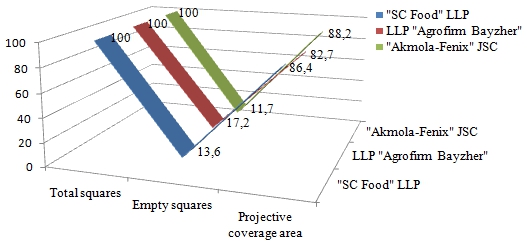
Fig. 4 – The average indicator of the projected coverage of pasture grassland, %
At the same time, there is no direct connection between the projective cover and pasture areas, the correlation coefficient is -0.997.
It should also be noted that the yields of the surveyed areas, depending on the botanical composition, varied from 1.9 to 5.3 tons / ha (Table 5).
Table 5 – Yields of pasture and air-dry herbage of pastures
| Plot | Yield indicators | Yield, t/ha |
| LLP «SC FOOD» | Pasture weight, t/ha | 1,936 |
| Air-dry weight, t/ha | 1,527 | |
| LLP «Agrofirm BayZher» | Pasture weight, t/ha | 5,368 |
| Air-dry weight, t/ha | 2,317 | |
| JSC «Akmola Phoenix» | Pasture weight, t/ha | 3,684 |
| Air-dry weight, t/ha | 2,497 |
Thus, the highest yields of the surveyed pastures were recorded in the conditions of LLP "Agrofirma-Aktyk" of the Tselinograd district of the Akmola region.
During studies, the root remains of herbaceous plants were studied, by taking into account the root residues using the frame method of root extraction by the method of N.Z. Stankov (Fig. 5, 6). The amount and composition of the root residues were determined in the 0-10, 10-20 cm layers on the variants. The mass of roots and its relation to the aboveground mass is determined by the presence of nutrients in the soil. With the increase in the availability of plants with elements of mineral nutrition, the total mass of roots in the soil increases and their share in the total biomass of the plant decreases. That is, the growth of the root system, its extent and mass is determined by many factors, one of the most important among which is mineral nutrition. The effect of stubble and root residues on soil fertility is determined not only by their quantity, but also by the chemical composition and nutrient content in them [7, P. 125].
The weight of the green mass of plants was determined at three points of the plot of each farm - on the plots of radical improvement, fallow and pasture.
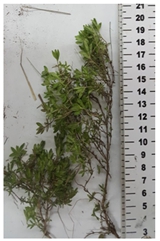
Fig. 5 – Cut off aerial part of plants for analysis
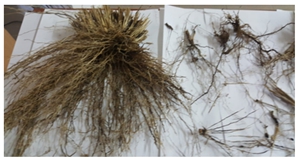
Fig. 6 – The process of washing root residues (manually)
The increase in accumulation in the soil of the root mass, as well as stubble residues, contributes to an increase in the fertility of the washed-out soils. The roots of plants have selectivity, so they are formed in a larger mass where there is more moisture and nutrients. If the fertility decreases in the lower part of the arable layer, then the plants create more roots in its upper part.
Results of the study and their discussion
The main factors of the ecological distribution of herbs are the degree of water availability of the soil and salt concentration of the solution. These factors, with their wide variability in space, determine the difference in conditions of diffuse exchange in plants, respectively, their biological fitness to the prevailing pressure of the soil solution.
The grass stands on white alkali are poorer in species composition, often with motley grasses. The yield of which makes up 3-5 centners per hectare. These pastures can be used from spring until late autumn to graze animals. According to its composition, the herbage is herbaceous, grass-mixed, resembles meadow steppes with about the same yield.
In this regard, scientists of S.Seifullin Kazakh Agrotechnical University conduct research in the framework of a grant project, the goal of which is to develop ways to manage the succession of phytocoenoses in hayfields and pastures and increase the sustainability of their productivity in the dry steppe zone of the Northern Kazakhstan.
Deserted parts of the steppes occupy 60-70% of the area, of which 30-40% are white alkali and saline, mainly with saltwort vegetation. Soils are light chestnut, usually of varying degrees white alkali, complexed with white alkali and saline. The most common steppe pasture grasses in the semi-desert zone are feather-fescue, tyrasak-fescue, mixed feather - fescue, sand-feather -fescue to some extent poured. Among motley grasses there are fleawort, Jerusalem sage, goldilocks, allium, yellow alfalfa, pyrethrum, artemisia (worm seed), Austrian and narrow-lobed on these pastures. Plants of an etimeric type such as bulbous bluegrass, desert borage are mixed on white alkali soil differences. The yield of the mass of eaten plants varies from 3 to 5 centners per hectare.
The climate of the dry-steppe zone of the Northern Kazakhstan is dry and continental, here there is a significant variability in precipitation and thermal conditions, both over the years and within the summer season. The difference, in the amount of precipitation, by years from 1935-2008 is determined by the ratio 1: 12 (150 and 190 mm). The value of the HTC (hydrothermic coefficient) in the summer months of 2003-2017 is a difference from 0.3 to 1.9. In average multi-year indicators, the value of the HTC is more favorable for the second half of the summer than for the first half. The culture of perennial grasses with such variability of the hydrothermal regime has, in general, more favorable conditions compared with all annual crops [8, P. 1-4], [9, P. 114].
The total determination of the productivity of the natural vegetation cover of the steppe zone of the Northern Kazakhstan (pasture potential) gives an interval of fluctuations in the yields of grasses in time and space in the range 1.0 - 2.4 c / ha dry mass, which is the result of many years of unsystematic use of the natural system leading to degradation. The latter is exacerbated by an extremely tense regime of moisture supply and low fertility of meadow white alkaline complexes.
A scientific prerequisite for the improvement of steppe pastures was an increase in the floristic and phytocenotic abundance of some plant communities.
Radical transformations of steppe (degraded) pastures to a new highly productive fodder area, possibly by superficial (1 and 2 soil-reclamation) improvement. The time of loosening of these soils is the end of the ten-day period of May, followed by herbage. Disk tools are used on soils where the work of cultivation is difficult or impossible [10, P. 1-4].
The decrease in the quality of pasture lands, their yields, and as a result, the reduction of the feed base in the Republic of Kazakhstan leads to the decline of the livestock sector. The results of studies conducted in 2001-2009 by Professor Stybaev G.Zh., Astana, Kazakhstan, were the basis for further research on the succession of vegetation in the dry-steppe zone of the Northern Kazakhastan.
In each locality, key plots (ranging from 1 to 10 hectares) were selected representing a certain stage of the succession under study. The species composition of the vegetation of these areas and the initial ecosystem was described, as well as the soil and the type of impact. In the study of successions, we used a change in three main indicators: a change in the species composition of communities [11, P. 16]. Change in the structure of dominants [12, P. 438]. Changes in phytomass stocks and its structure [13, P. 216].
Sustainable pasture of the LLP "SC Food" of Akkol district of Akmola region is characterized by a constant high pasture load. The pasture of the scientific and experimental campus of JSC " S.Seifullin Kazakh Agrotechnical University" was at the stage of digression, in 2017 the pasture was completely abandoned and its vegetation began to recover gradually.
Pastures of LLP “Agrofirm BayZher” and JSC “Akmola Phoenix” of the Tselinograd district of the Akmola region were under heavy load for several years. The steppe is used as a winter pasture.
The study of pastures has shown that there is a direct link between the change of pasture impact and the response of pasture. The analysis carried out for such indicators as the change in the species composition, the pattern of species dominance, proves the close relationship of all phytocoenosis indicators with pasture load. For any change in the mode of grazing, the phytocenosis corresponds to regular changes in its species composition, the structure of dominance, and the intensity of the production process.
Conclusion
Conducted monitoring of pasture grasslands in 2017-2018 in the study plots showed the predominance of rhizome species, long-term loose-head grass cereals, and leguminous grasses with alfalfa, sainfoin, etc. Projective coverage of pastures on farms varied from 82.7 to 88.2% . The yield of the surveyed plots, depending on the botanical composition, varied from 1.9 to 3.3 t / ha, the highest yield of the surveyed pastures was noted in the conditions of LLP "Agrofirm-Aktyk" of the Tselinograd district of the Akmola region.
Analysis of soil moisture, which was determined in the presowing period, indicates a sufficient moisture content, which is explained by the abundant precipitation in the spring months, as a result of which the plants create more roots in its upper part, while in dry years the level and stability of the crops will decrease.
In general, we can say that the pastures are stable, and in recent years, due to the moderate winter load, a set of species is preserved. Regardless of the weather conditions, no new species appeared and no species was dropped. However, the yield of these herbs is rather low. We believe that changing the mode of grazing from grazing to zero on pastures will lead to a radical change in the structure of dominants.
When grazing digression, the structure is simplified and the species composition of the grass stand is depleted. Grazing and pasture conditions are in close relationship: for each change in the nature of grazing, the ecosystem responds with a change in the composition of species and dominants. If the effect is unchanged, the phytocenosis retains a constant species composition, which varies under the influence of weather conditions. With a sharp decrease in the load, the recovery processes go very quickly. From the seed fund contained in the soil, species of different ecology and different habitats appear. In the initial stage of demutation, a flash of species abundance and a gradual loss of species occur simultaneously. Two of these processes eventually lead to the establishment of a fairly stable species composition. When the grazing regime changes a bit, the degradation of the grass stand begins again.
| Конфликт интересов Не указан. | Conflict of Interest None declared. |
Список литературы / References
- Доспехов Б. А. Методика полевого опыта / Б. А. Доспехов. Москва, 1979.- С. 419-426.
- Методика проведения сортоиспытания сельскохозяйственных растений. Утверждена приказом Министра сельского хозяйства Республики Казахстан от «13» мая 2011 года № 06-2/254
- Можаев Н. И. Состав растительности на залежах степной зоны Акмолинской области и возможности превращения их в продуктивные кормовые угодья / Н. И. Можаев, Н. А. Серикпаев, Г. Ж. Стыбаев и др. // Вестник науки Казахского аграрного университета им. С. Сейфуллина. Том III, 8. Астана, 2009.- С. 30-39.
- Рябинина З. Н. «Способ выделения стадий деградации степной растительности в условиях антропогенного воздействия». / З. Н. Рябинина Патент № RU От 20.05.2010. Оренбургский государственный педагогический университет.
- Туманян А. Ф. «Способы формирования сеяных сообществ долголетних сенокосов и пастбищ». / А. Ф. Туманян, А. М. Салдаев // Патент № RU Опубл.2006.01.27. Волгоградская государственная сельскохозяйственная академия.
- Зволинский В. П. «Способы повышения продуктивности деградированных пастбищных угодий». // В. П. Зволинский, О. В. Зволинский // Владельцы патента RU Опубл.2007.08.10. Прикаспийский НИИ аридного земледелия РАН.
- Миркин Б. М. Краткий курс общей экологии. Часть I: Экология видов и популяций // Б. М. Миркин, Л. Г. Наумова. Учебник. Уфа: Изд-во БГПУ, 2011. - 172 с.
- Кизяев Б. М. «Способ создания поликомпонентных пастбищ на аридных землях» Б. М. Кизяев, В. В. Бородычев // Владельцы патента RU Опубл.2006.06.27. ВНИИ гидротехники и мелиорации им. А.Н.Костякова.
- Жазылбеков Н. А. Рекомендации по рациональному использованию естественных и улучшенных пастбищ / Н. А. Жазылбеков, И. И. Алимаев, А. А. Тореханов и др. Алматы, 2011. - 180 c.
- Петров В. И. «Способ выполнения исследования по определению эффективности технологий улучшения пастбищ» / В. И. Петров, С. А. Корпушов. Патент № RU От 21.01.2006. ГУ Всероссийский научно-исследовательский институт агролесомелиорации.
- Щербаков М. Ф. Правильно улучшать природные кормовые угодья / М. Ф. Щербаков, В. А.Кулаков.// Земледелие, №1. 2000. - С. 16-17.
- Stybaev Advances in Environmental Biology / G. Stybaev, A. Baitelenova, A. Nogaev. 8 (13) August 2014, Pages: 438-442 ISSN-1995-0756 EISSN-1998-1066 «The Technique of Transforming Tall-Weed Fallow into Fodder Lands With Different Methods for Pure Sowing of Permanent Grasses».
- Stybaev G. Surface pasture improvement in the conditions of Northern Kazakhstan by planting wheat grass / G. Stybaev, Serikpayev, A. Baytelenova. Bulletin of State University named after Shakarim Semey city. - 2015 №2 (70), 214 – 218 с.
Список литературы на английском языке / References in English
- Dospekhov B. А. Metodika polevogo opyta [Methodology of Field Experience] / B. А. Dospekhov. Moscow 1979. – P.419-426. [In Russian]
- Metodika provedeniya sortoispytaniya sel'skokhozyaystvennykh rasteniy [Agricultural Plants Testing Methods]. Approved by the Order of the Minister of Agriculture of the Republic of Kazakhstan on May 13, 2011 No. 06-2/254 [In Russian]
- Mozhaev N. I. Sostav rastitel'nosti na zalezhakh stepnoy zony Akmolinskoy oblasti i vozmozhnosti prevrashcheniya ikh v produktivnyye kormovyye ugod'ya [Plants Composition on Deposits of Steppe Zone of Akmola Region and Possibility of Turning Them into Productive Fodder Lands] / N. I. Mozhaev, N. A. Serikpaev, G. Zh. Stybaev et al. // Vestnik nauki Kazakhskogo agrarnogo universiteta im. S. Seyfullina [Scientific Bulletin of Seifullin Kazakh Agrarian University]. Volume III, 8. Astana, 2009. – P. 30-39. [In Russian]
- Ryabinina Z. N. Sposob vydeleniya stadiy degradatsii stepnoy rastitel'nosti v usloviyakh antropogennogo vozdeystviya [Method for Identification of Degradation Stages of Steppe Vegetation under Conditions of Anthropogenic Impact] / Z.N. Ryabinina. Patent No. RU 2389175. on05.2010. Orenburg State Pedagogical University. [In Russian]
- F. Tumanyan, Sposoby formirovaniya seyanykh soobshchestv dolgoletnikh senokosov i pastbishch [Methods for Forming of Seeded Communities of Long-Hay Hayfields and Pastures] / A.F. Tumanyan, A.M. Saldaev // Patent No. RU 2268566. Publ. 2006.01.27. Volgograd State Agricultural Academy. [In Russian]
- Zvolinsky V. P. Sposoby povysheniya produktivnosti degradirovannykh pastbishchnykh ugodiy [Methods for Increasing Productivity of Degraded Pastures]. // V. P. Zvolinsky, O. V. Zvolinsky // Patent Owners RU 2303868. Publ. 2007.08.10. Caspian Research Institute of Arid Agriculture of RAS. [In Russian]
- Mirkin, B. M. Kratkiy kurs obshchey ekologii. Chast' I: Ekologiya vidov i populyatsiy [Short Course in General Ecology. Part I: Ecology of Species and Populations] // B. M. Mirkin, L. G. Naumova. Textbook. Ufa: Publishing house BSPU, 2011. – 172 p. [In Russian]
- Kizyaev B. M. Sposob sozdaniya polikomponentnykh pastbishch na aridnykh zemlyakh [Method for Creating Multicomponent Pastures on Arid Lands] / B. M. Kizyaev, V. V. Borodychev // Patent Owners RU 2278487. Publ. 2006.06.26.2. Institute of Hydraulic Engineering and Land Reclamation them. A.N. Kostyakova. [In Russian]
- Zhazylbekov N. A. Rekomendatsii po ratsional'nomu ispol'zovaniyu yestestvennykh i uluchshennykh pastbishch [Recommendations on Rational Use of Natural and Improved Pastures] / N. A. Zhazylbekov, I. I. Alimaev, A. A. Torekhanov, et al. Almaty, 2011. – 180 p. [In Russian]
- Petrov V. I. [Method for Carrying out Research to Determine Effectiveness of Pasture Improvement Technologies] / V. I. Petrov, S. A. Korpushov. Patent number RU2267894. on 01/21/2006. State All-Russian Research Institute of Agroforestry. [In Russian]
- Shcherbakov M.F. [Properly Improvement of Natural Forage Lands] / M.F. Shcherbakov, V.A. Kulakov. // Zemledeliye [Agriculture], No.1. 2000. - P. 16-17. [In Russian]
- Stybaev Advances in Environmental Biology / G. Stybaev, A. Baitelenova, A. Nogaev. 8 (13) August 2014, Pages: 438-442 ISSN-1995-0756 EISSN-1998-1066 «The Technique of Transforming Tall-Weed Fallow into Fodder Lands With Different Methods for Pure Sowing of Permanent Grasses».
- Stybaev G. Surface pasture improvement in the conditions of Northern Kazakhstan by planting wheat grass / G. Stybaev, Serikpayev, A. Baytelenova. Bulletin of State University named after Shakarim Semey city. - 2015 №2 (70), 214 – 218 p.
